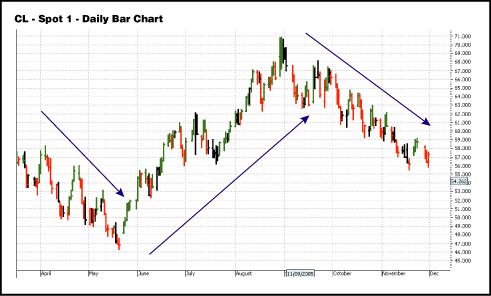Slaying The Dragon Of Chaotic Markets
Searching For (Trading) Certainty
by Aaron Lynch
Like dragons, markets are always uncertain, whether they are in a trading range or a trend. Here's a way to make your profits (for certain) by following the short-term or long-term trend.
One of the most basic human emotions dictating at least one decision each day is our confidence in a known outcome. This can be as simple as knowing the sun will come up tomorrow or the train you take to work will arrive on time (in many cities, of course, this is a forlorn hope!). Without this basic premise, however, our lives would descend into chaos, as we could not make a reliable or informed decision because we would be continually second-guessing all the choices confronting us.
So how does this affect trading? A colleague of mine disturbs traders by making the statement that “if the markets were certain then there would be no markets.” This can shake the confidence of some. If every market reacted in the same way every time, that market would either be very easy to trade or break down, as it could not exist this way.
CERTAINTY IN UNCERTAINTY
Balancing the basic need for certainty coupled with an uncertain trading landscape, we must find an anchor or reference point from which to begin. For me and for all successful traders, that anchor is our chosen trading plan.
My trading plan is structured around a tool known as a swing chart, based on the principles established by W.D. Gann.
Now, what I need you to do is take most of what you have heard about Gann theory and Gann the man and forget half of it, which might get you somewhere near to the truth. W.D. Gann was a forecaster of markets and a sublime trader, but you need to see past the hype that surrounds him and know that numbers were his forte and mechanical systems a big part of his trading.

FIGURE 1: CRUDE OIL CONTRACTS. The swings in price action can be seen in this chart.
Excerpted from an article originally published in the December 2006
issue of Technical Analysis of STOCKS & COMMODITIES magazine. All rights
reserved. © Copyright 2006, Technical Analysis, Inc.
Return to December 2006 Contents